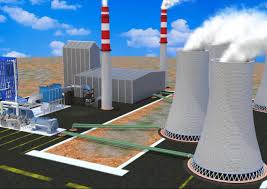Government initiates Hwange Units 9 and 10 power projects
Government has initiated the development of Hwange Units 9 and 10 as part of efforts to enhance the country’s energy matrix, it has been learnt.
This comes as the country’s electricity demand is projected to reach circa 5177 megawatts by 2030 on the back of anticipated growth of productive sectors encompassing mining, manufacturing, agriculture and household consumption growth.
Lately, the country has been enjoying a relatively enhanced power supply, on account of electricity generation at Hwange Units 7 and 8, as well as optimum output from Hwange Units 1 – 6 since the beginning of the year.
The completion of the Hwange Units 7 and 8 expansion project significantly improved the energy supply to the country ameliorating deficits at Kariba South.
As it stands Hwange and Kariba have an installed capacity of 1520 megawatts and 1050 megawatts respectively.
These developments come at a time when the Zambezi River Authority (ZRA) has constantly reported that electricity generation at Lake Kariba might remain suppressed given the decline of water inflows into the reservoir.
Electricity generation from Lake Kariba took a nosedive last year but the country’s electricity generation was salvaged by the commissioning of the US$1,5 billion thermal power plant which was completed early last year adding a combined 600 megawatts to the national grid.
The water levels at Lake Kariba have been falling steadily as a result of decreased rainfall activity in and around the Kariba catchment area during the 2023–2024 rainfall season owing to the El Nino phenomenon.
As such, water allotment for electricity production is poised to stay at 16 billion cubic metres (BCM) through 2024 providing for combined annual average power production of 428 megawatts between Zimbabwe and Zambia.
This translates to a water allocation of 8 BCM per power utility, giving an average power production of 214MW to each of the two countries.
“The government has started project development activities for the development of Hwange Units 9 and 10 that will underwrite the country’s base load and energy mix.
“In line with the medium-term growth projections, the country’s electricity demand will continue to grow up to 5 177 MW by 2030, driven primarily by increasing demand from such productive sectors as mining, manufacturing, agriculture, as well as the growth of household consumption,” said Finance, Economic Development, and Investment Promotion Minister, Professor Mthuli Ncube while presenting the 2025 budget strategy paper.
According to the government this is to ensure a stable electricity generation and supply in the face of major investments in manufacturing, mining, and tourism sectors.
As such, further investment and policy reforms to meet the growing electricity demand will be scaled up through the implementation of new projects, as well as maintenance and refurbishment programmes of existing power generation units.
According to analysts Zimbabwe holds around 500 million tonnes of proven coal reserves ranking 38th in the world.
This indicates the country still has large reserves of coal suitable for coal-fired power generation.
During a recent Annual General Meeting, Zimbabwe Energy Regulatory Authority (ZERA) chairman Dr. David Madzikanda mentioned that water levels at Kariba have depleted significantly for significant electricity generation, indicating a generation of less than 220 gigawatts from its total potential.
“I think as we speak, we are less than 220-gigawatt generation from the Kariba, from its total potential,” said Dr Madzikanda in June this year.-ebsinessweekl











